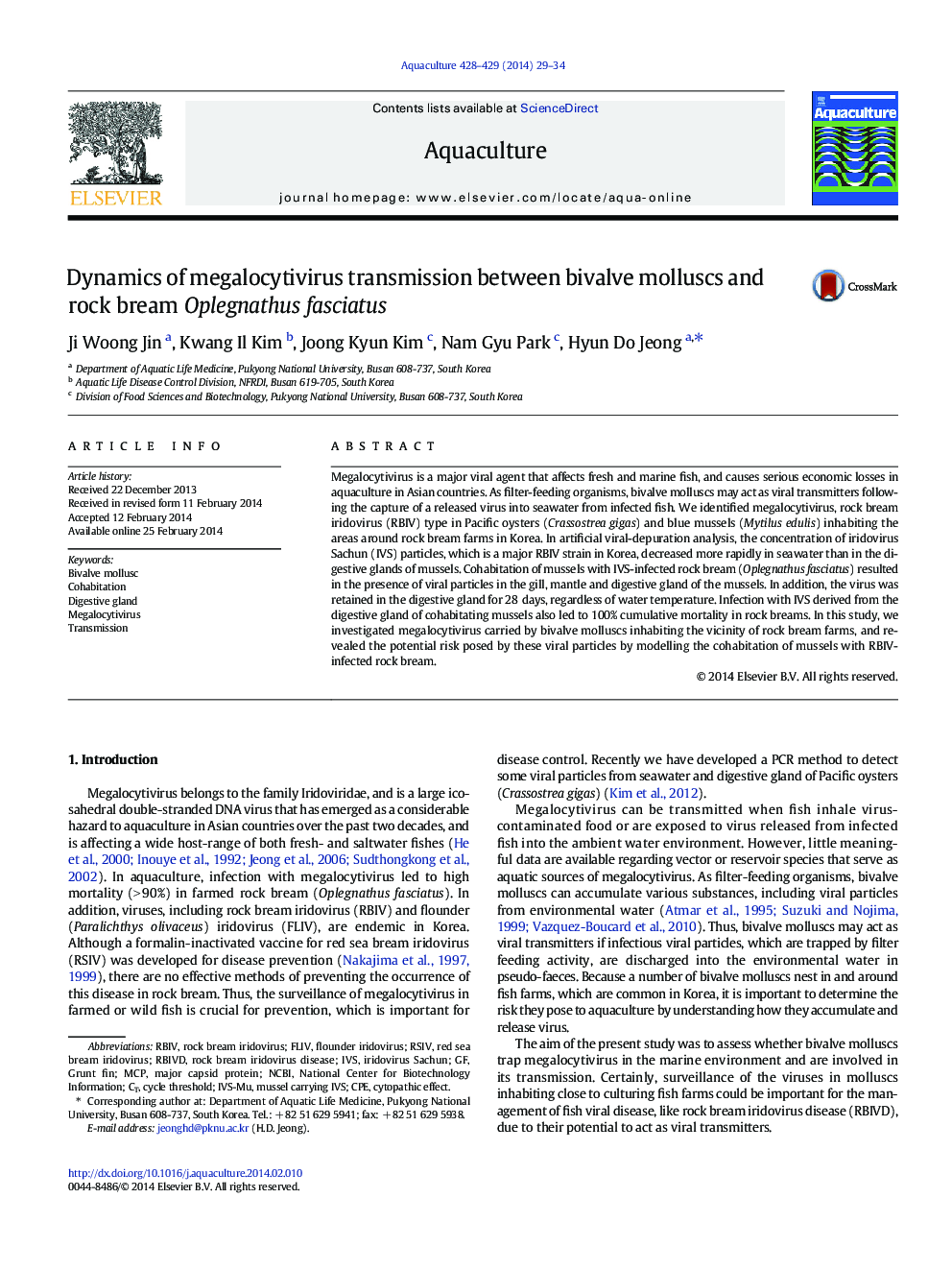| Article ID | Journal | Published Year | Pages | File Type |
|---|---|---|---|---|
| 8495033 | Aquaculture | 2014 | 6 Pages |
Abstract
Megalocytivirus is a major viral agent that affects fresh and marine fish, and causes serious economic losses in aquaculture in Asian countries. As filter-feeding organisms, bivalve molluscs may act as viral transmitters following the capture of a released virus into seawater from infected fish. We identified megalocytivirus, rock bream iridovirus (RBIV) type in Pacific oysters (Crassostrea gigas) and blue mussels (Mytilus edulis) inhabiting the areas around rock bream farms in Korea. In artificial viral-depuration analysis, the concentration of iridovirus Sachun (IVS) particles, which is a major RBIV strain in Korea, decreased more rapidly in seawater than in the digestive glands of mussels. Cohabitation of mussels with IVS-infected rock bream (Oplegnathus fasciatus) resulted in the presence of viral particles in the gill, mantle and digestive gland of the mussels. In addition, the virus was retained in the digestive gland for 28Â days, regardless of water temperature. Infection with IVS derived from the digestive gland of cohabitating mussels also led to 100% cumulative mortality in rock breams. In this study, we investigated megalocytivirus carried by bivalve molluscs inhabiting the vicinity of rock bream farms, and revealed the potential risk posed by these viral particles by modelling the cohabitation of mussels with RBIV-infected rock bream.
Keywords
Related Topics
Life Sciences
Agricultural and Biological Sciences
Aquatic Science
Authors
Ji Woong Jin, Kwang Il Kim, Joong Kyun Kim, Nam Gyu Park, Hyun Do Jeong,
